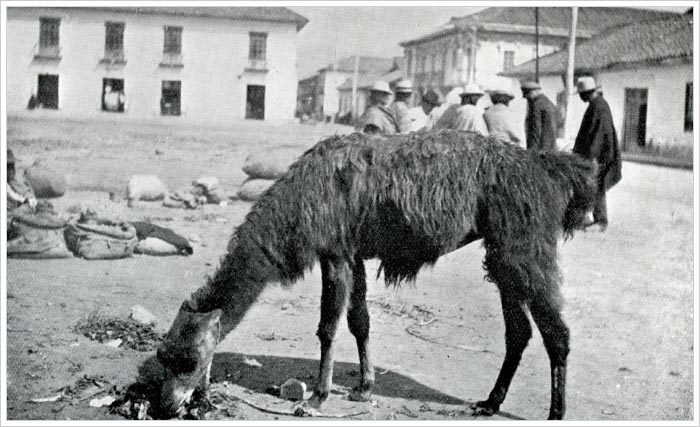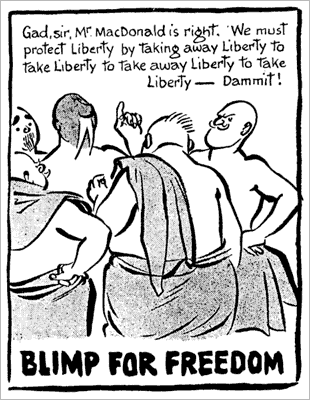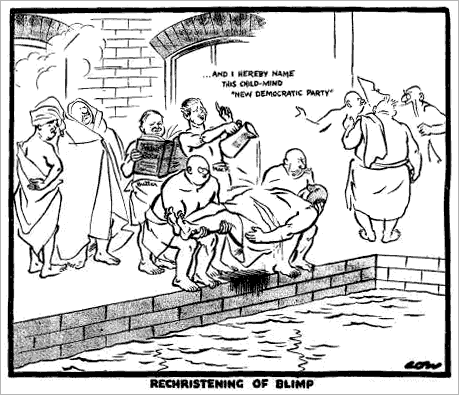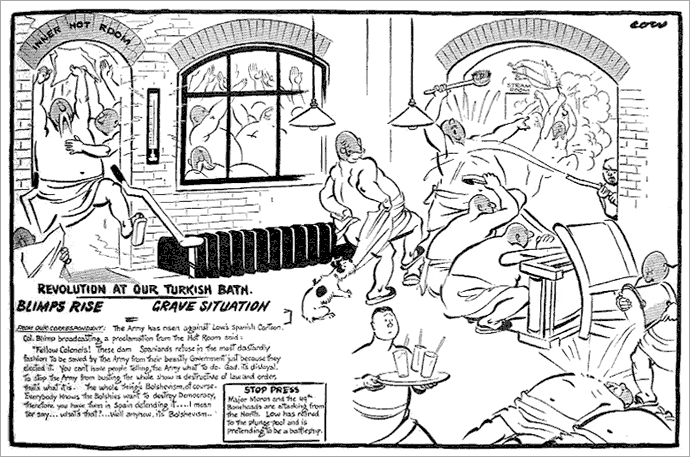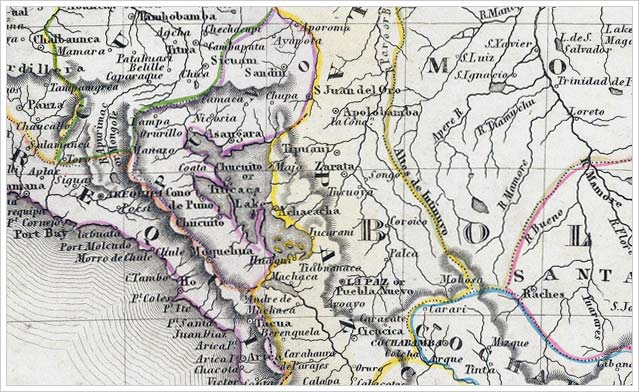Lake Titicaca, La Paz and Sorata, Part 1
I left Jura at 9 a.m. by the Arequipa Puno train, which set me down at Puno, alongside Lake Titicaca at 8 p.m. or a little earlier; there one of the comfortable lake steamers, the “Puno” or the “Quaqui,” awaits the train for passengers for La Paz. The highest point passed by the train on the way to Puno is Crucero Alto (14,666ft.); the country here is just a high, bleak, sandy desert for miles around. Either here or at Juliaca further up the line, you get off to continue the long journey to the Rio Santo Domingo (Sunday) river. At Juliaca, part of the train goes on to Cusco, the old capital of the Incas, and the other part goes to Puno.
After passing Jura, I saw several herds of guanacos, and sometimes a few deer. Further up, over the 12,000ft. line near Crucero Alto and Juliaca, I could see the vicuñas going galloping off on either side of the line, as the train came near. The guanaco is found from 3,000ft. to 9,000ft. or 10,000ft., the vicuña from 9,000ft. to 16,000ft., and the true condor eagle from 14,000ft. to 16,000ft., except when some animal dies down below, then they seem to scent it and go to as low as 12,000ft. to finish it off. At 16,000ft. perpetual snow generally begins in these parts, and over that altitude nothing is to be seen, not a bird, or a beast, or a tree of any sort.
At first I had the idea of continuing the journey to Challana from Puno and not touching La Paz until my return, but I eventually decided to go and call on Staedlier first, and hear what he had to say about his trip.
At Puno I went to call on the Prefect, who received me very well, and wanted me to stay for a month or two to examine some Inca ruins that he knew of some ten leagues off. He offered to find me ten or twelve Indians and llamas, and lend me a good mule for myself. I thanked him, and told him that after I had finished the job on hand I would certainly look him up again and explore the ruins he spoke of.
There was no boat the night the train arrived, as I had come by the weekly cargo train, or extra, so I left Puno by the lake steamer the following night, and got to Quaqui on the Bolivian side of the lake next afternoon.
Lake Titicaca, the highest navigable lake in the world, is 165 miles long, 65 miles broad, and from 100ft. to 600ft. deep. One half of the lake belongs to Peru, the other half to Bolivia; there are several islands peopled chiefly by Indians and Cholos, or half-castes, who sail all over the lake from the islands to the steamer, in their native balsas, made of grass and reeds, with one sail set, in all sorts of weathers. The lake can be quite rough at times when squalls upset the waters.
This great inland sea, replenished by the melting snow of the Andes, is one of the most magnificent sights in the world, and there is no finer view anywhere than the high Ylliapo range and the Peak of Sorata, and the wonderful pyramid-shaped mountains of Yllimani, close to La Paz, two of the most magnificent ranges of the Cordillera of the Andes, which you see from the deck of the steamer.
From Quaqui I took the train to La Paz Alto, thirty-five miles off, over flat ground all the way; this line passes through General Pando’s big ranch. At La Paz Alto (12,525ft.) there are always several big brakes drawn by six mules or horses, which go down to La Paz at a good hand-gallop along the winding road cut out of the mountain; there is also a steam tram which has recently been constructed in connection with the La Paz and Quaqui line, and which is controlled by the same Peruvian Corporation at Lima that owns the lake steamers.
As you go down the steep mountain road on top of a coach, a magnificent panorama opens before you, and you see the city of La Paz, with its red-tiled roofs, open plazas, gardens, churches and public buildings, and some old ruins on the outskirts, and beyond it, stretching to the foot of the beautiful Yllimani Mountain the rich basin that forms the Yungas Valley.
The city of La Paz (11,000ft. to 10,800ft.) is built in two distinct levels. On the higher ground are the Government buildings, and the Plaza where the fine artillery band plays; and lower down is the big Indian market. Lower down still, just on the outskirts of the city, at 10,000ft. down a beautiful level avenue past the barracks, stands the picturesque house of General Pando, who led the Liberal Party in the revolution of 1898, and succeeded in replacing Alonso for two years as President of Bolivia. General Pando was certainly a man who did more for Bolivia than many others, though he did some good for himself as well. It was General Pando who regulated the rich rubber zone of the Acre with Brazil, and thereby saved his country from war, got a good round sum of money for Bolivia, and undid the work of President Melgarejo, a former President, who had ceded the Acre district over to Brazil, with small compensation for Bolivia. When Pando came into power, he advised Brazil that this was Bolivian territory, and that the former President had no right to barter away land belonging to the country he governed; but as Brazil had policed the district for a number of years, and as it was now peopled largely by Brazilians, the Brazilian Government did not want to give it up. However, they offered to settle the matter by paying Bolivia £2,000,000, and the transactions were carried out in November, 1903. When I got to La Paz, in the middle of that month, General Pando was still absent with his staff in the Acre.
While I was at La Paz, I put up at the Grand Hotel Guibert, which is kept by a rich Frenchman of that name. The rooms are all well furnished, the food is very good, and the prices of everything, even the drinks, are extremely reasonable. All the servants and waiters are Pongos (Indians), all of them males; they wear woollen nightcaps to keep their heads warm. The only drawback was that there was no decent lavatory, and not a single bath in the place. So the first thing I did on arriving was to go out and buy the largest tub that I could find for my morning dip.
M. Guibert told me that he came to Bolivia with a fair amount of capital, and had made a good deal more, but he complained of having contracted very bad rheumatism. I advised him to give the Jura baths a trial, and to take some saltpetre every day and see how that worked. I have met him several times since, and he tells me he is cured.
The whole city of La Paz is built on a high gold mountain. Many large nuggets of gold have been found on the banks of the river that runs through the city. One day I rode off on one of my mules to visit the gold washing of a French Company, at the invitation of the manager, a Frenchman, who lived at the place with his wife. The employés consisted of a few whites and several Indians, both men and women, and the Company had four large cranes to lift the big river boulders. The day I was there I saw not just a few, but a considerable number of small nuggets, one of them weighing nearly an ounce, picked up by the Indians and handed to the different overseers; this was before the gravel was got ready to wash, and I thought to myself what a rich place it must be. Imagine my surprise to read in a newspaper two years afterwards, that this Company had gone broke.
As I had intended, I called on the Vice-Consul for Belgium, Mr. Staedlier, who had not long returned from his trip. He repeated and confirmed, more or less, what I had read of his journey in the papers, and said the Indians would never permit anyone to cross the River Challana, let alone go to Paroma, and he strongly advised me to abandon the trip.
Before leaving La Paz I also went to see Sanchez, a Spaniard, who had been supplying the Indians of Challana with rifles and ammunition, and receiving payment in rubber, till the authorities caught him and Villavicencia and imprisoned them in La Paz; but, after a year, the gaol was attacked one night, and the prisoners escaped. Villavicencia got back to Challana, but Sanchez, who was suffering with his chest, was recaptured on his way to Sorata, and again imprisoned. He was eventually released on payment of a big fine to the Government, on condition that he promised not to do any more gun-running, and reported himself once a month to the officials in La Paz. He said he would communicate with the Indians through Villarde, to whom he would explain my object in going in, and he sent off one of his Indians with a message to him. He advised me to go in by way of the Tipuani, instead of the Tongo, and told me that Mrs. Villavicencia, Villarde’s sister, lived at Sorata, and that it would be policy to go and see her on the way, which I decided to do.

